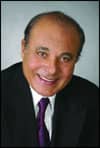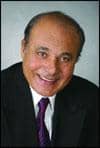by Al E. Atta, DDS, MSD, MBA
An MBA can make your practice more efficient and your life more enjoyable

Orthodontic treatment is perceived as a high-cost, high-expectation, and high-leverage health service. Managing the service as a business entity is a survival value, but dental school does not teach us the business of our profession. Quick-fix courses from nonorthodontists are a waste and a cost.
My business experience started in 1994, when my oldest daughter, who majored in business at Southern Methodist University and secured an MBA from Vanderbilt University, advised me that I should seek an MBA, assuring me that it would enrich my life. She recommended the Executive MBA program at Northwestern University’s Kellogg School of Management. Her reason was that Kellogg is number one globally, so it was an investment with ensured returns.
Back then, I was practicing at two offices, working more than 40 hours a week—the traditional 8 to 5. My accountant controlled my costs, since more than 55% of them were fixed and escalating out of my control. My office manager controlled my time. I followed a hectic, high-stress schedule, and at the end of the year my cash flow was marginal.
I was seeing 50 to 60 patients per day. I assumed that hiring more personnel or adding an associate might help, but it ended up as an added stress and another cost. I was practicing the Push system of operation rather than the Pull system.
To measure my practice effectiveness, I had to look at my bank statement, since every month my accountant gave me an operating statement that I could not understand or manage.
Being the first orthodontist to enter Kellogg, managing two practices, and meeting my family’s demands was a challenge. I was also paying three private college tuitions at the time.
I was extremely fortunate to study marketing under Professor Phil Kotler, PhD, the global leader in modern marketing. Kotler asked me during one of his classes, “Al, what business are you serving?”
I never thought that I was in a business. My quick response was, “I am a smile doctor.” He accepted that and stated that any time a person provides a service or product to the market, he is managing a business entity and must implement the principles of business to survive.
What are the main goals of a business entity?
1) Sustained growth, which can only be created by serving quality that secures a competitive advantage to attract new patients to the practice. If you do not grow, you do not survive.
2) To generate continuous profit, you must strategically manage your time and control costs. You must also recognize your profit margin, your break-even point, and your cash flow.
3) Customer service is simple: Identify and serve your customers. Continuous quality improvement is a function of monitoring, measuring, implementing, and rewarding.
4) Alliance and integration with suppliers and other orthodontists and dentists ensures cost management and empowers your decision-making when dealing with other entities.
5) Managing your debt ensures a healthy return on your current and future capital assets.
Business education is no different from orthodontic education. In fact, with the support of Al Guay, DDS, MS, director of policy at the ADA, a strategic alliance has been initiated between the ADA and Kellogg to better serve our profession.
Business schools teach you to solve problems rationally and support your decisions with data and measurement, not numbers that represent an average that does not exist. They also teach you to identify your customers’ needs and serve them. My primary customers are my patients and my suppliers. My secondary customers are the parents and referring dentists.
I contacted the Kellogg marketing department, and they assigned a PhD graduate to formulate and analyze a customer-satisfaction survey for my practice. The result showed that communication, convenience, and comfort are my competitive advantage at p<0.02 degree of confidence.
Knowledge is freedom to change, so I have rejected the traditional and uniform concept of mechanics that centered on bracket selection and wire sequence in favor of customized and controlled mechanics that patients accept. I integrated my patients into my treatment process by letting them monitor their improvement, ensuring their motivation and confidence in the process.
Quality in the treatment process is a balanced function between method, mechanics, and material. You have to utilize the best material available, regardless of the cost, if it saves time and ensures the outcome you want. Ed Demming, a business professor at MIT and the guru who invented the Total Quality Control system, stresses the utilization of quality products to reduce variability.
Because of what I learned in business school, my operating statement is demystified, and I can recognize my cost deriver: the rent.
Now I see patients 18 hours a week, with 2–3 hours for support and administration, and my income matches what I made when I was working 40 hours a week. I am debt-free and have more leisure time for my family and myself.
Business education is a capital asset that continues to present a great return. Integrating business functions into your practice will increase your Index of Happiness.
Al E. Atta, DDS, MSD, MBA, has a private practice in Deerfield, Ill. He is certified by the American Board of Orthodontics. He can be reached at [email protected].









